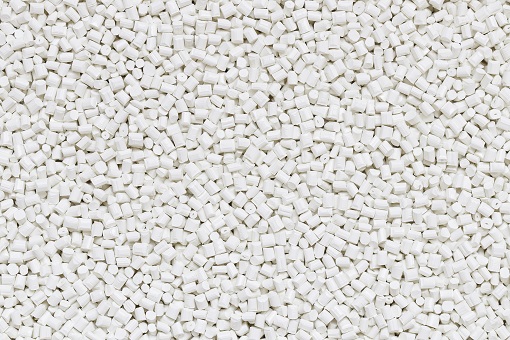NEWS
Antistatic additives for plastic: What are they and how do they benefit our industry?
As static electricity on plastic surfaces has recently occurred on a large scale, it raises concerns about a fire or explosion of flammable materials, which poses a threat on end-users’ lives. Hence, the use of antistatic additives for plastic have played a vital part not only in improving the quality of plastic products, but also in ensuring our safety.
Static electricity is a phenomenon in which a large amount of electric charges are accumulated on the surface of plastic products, resulting in the formation of spark discharges. In particular conditions, these may cause a fire or explosion, especially for household appliances which are exposed to other electric sources at a high frequency. Besides, the build-up of electric charges also attracts dust (on products’ surface) or accelerates its decomposition, thus shortening products’ lifecycle. Not only does static electricity take place in the products’ service lives, it also arises during the manufacturing process such as injection moulding, blow moulding,…leading to slower processing speed as well as contaminated materials. For that reason, the use of antistatic additives for plastic has never been so important to our plastic industry.
1. What are antistatic additives?
Antistatic additives are substances added to plastic products with a view to eliminating the accumulation of electric charge on their surfaces. Basically, these substances work by balancing the number of electrons between plastic surface and other materials via their ionization. Antistatic agents are composed of two ends – a hydrophobic organic end and a hydrophilic end. When being added to plastic, the hydrophobic end will migrate to cover the surface of plastic products. It subsequently absorbs moisture and conducts the ionization, which helps balance the amount of electric charge on the plastic surface.

2. Common types of antistatic additives for plastic
Based on the applications and the time by which they are applied, antistatic agents can be separated into two different groups: external and internal antistatic agents.
- External antistatic additives: The name “external” comes from the way they are used. External antistatic additives for plastic are applied onto the end-products’ surface by techniques such as spraying or dipping. Though it seems to be easy and time-saving to use this type of antistatic additive, it won’t last long. External antistatic additives work effectively for just around 6 weeks. After that, the protective layer they created will be gradually abraded by the influence of other mechanical factors. Hence, the application of external antistatic additives is temporary and most suitable for products with short lifecycle.
- Internal antistatic additives: Unlike its counterpart, internal antistatic additives are used during the plastic manufacturing process to prevent the electric charge on the surface of polymer. After being added to the plastic, their hydrophobic end will migrate to the surface of the material and form a water absorbing layer. In which, their ionization takes place to discharge static electricity. By this way, internal antistatic additives are more long-lasting and hence, are more preferable by most plastic manufacturers.
Generally, regardless of types, applications or mechanism of action, effective antistatic additives for plastic must ensure these 3 main criteria:
- Hydrophilic and hygroscopic properties – to make sure they are able to form a hygroscopic
- The ability to migrate towards the surface of the material – to create a hygroscopic layer
- The ability of ionization in water – the presence of ion helps balance the number of electrons between polymer surface and equipment or other materials’ surface, thus eliminating the electric charge phenomenon.
3. How do antistatic additives benefit our plastic industry?
Thanks to their benefits, antistatic additives are widely used in various applications.
Food packaging films
Among various plastic resins, polyethylene (PE) is the most commonly used material for food packaging film production. Thanks to its outstanding mechanical properties ( tensile strength, smelless, tasteless and a waxy structure with a milky colour), polyethylene is also used in the production of foils, packaging, containers, bottles, as well as drinking water pipes. As it has a surface resistance of around 1015Ω, packaging films made of PE resin are highly prone to static electricity phenomenon. This not only attracts a large amount of dust on the film surface, but also results in the adhesion of film layers, which severely afflicts the quality of the content. Therefore, the use of internal antistatic is the key factor dedicating to the quality of packaging films.
Household appliances
Let’s imagine your vacuum’s plastic cover is in the lack of antistatic agents, what would happen? First of all, it could be very dusty as the electric charge accumulated on the vacuum’s surface highly attracts the contaminants in the air. The excessive friction between its cover and the air or other materials easily degrades the plastic surface. Furthermore, the electric charge on its surface can spark discharges, which may result in a fire or explosion of flammable materials. This is very risky as most modern families have more than one electric device at home. As such, the use of antistatic additives for plastic can be considered as an indispensable technical standard for household appliances.

Plastic manufacturing process
Static electricity during the plastic manufacturing process can result in numerous consequences such as adhesive film layers (blown films), products’ quality degradation, dusty films, electric shock for workers and even fire/explosion in the presence of flammable materials. As such, the use of antistatic additives for plastic during this process largely contributes to the quality of end-products as well as the safety of the production.


 Tiếng Việt
Tiếng Việt


